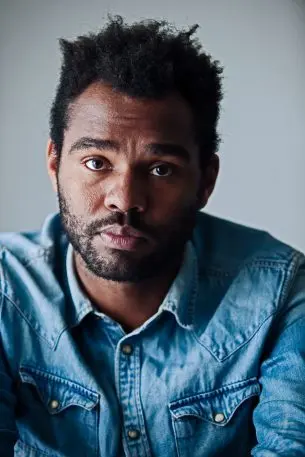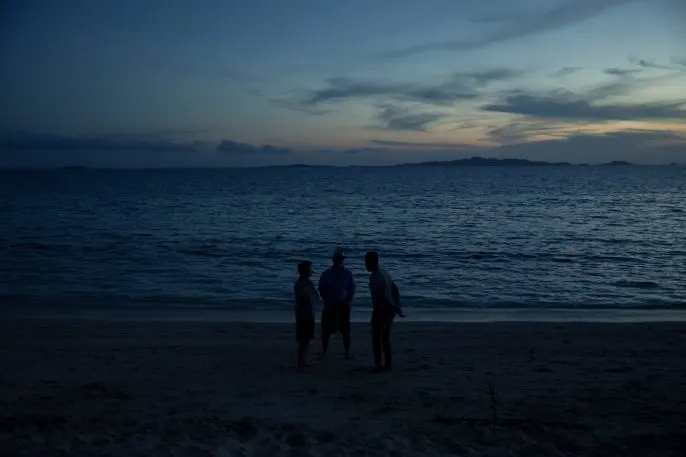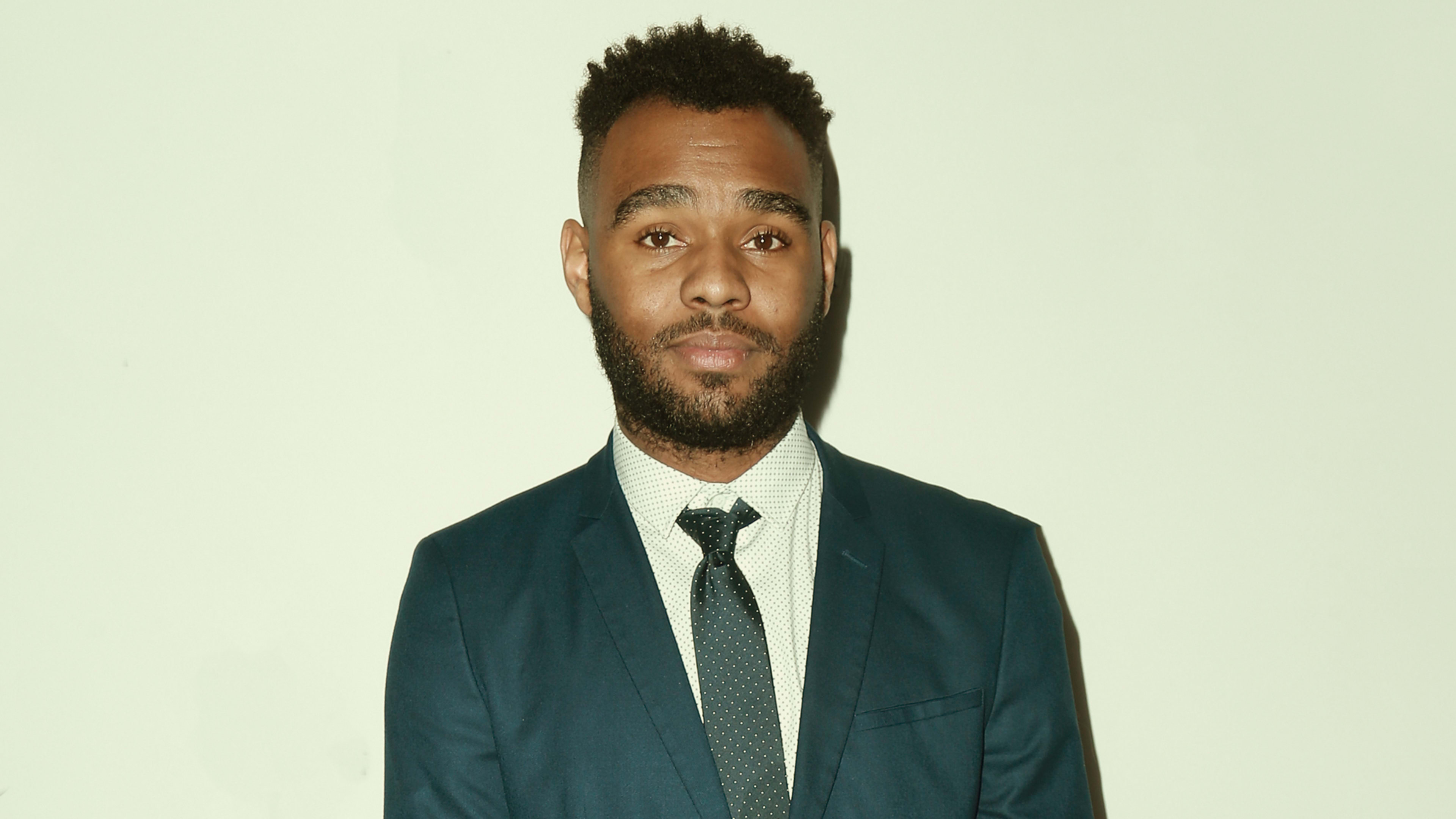J.D. Dillard became Hollywood’s indie darling when his debut feature film Sleight premiered at Sundance in 2016 and was acquired by WWE Studios and Blumhouse. The film went on to gross $4 million on a shoestring $250,000 budget–and opened the door to other projects including his sophomore Sundance hit Sweetheart and co-writing and directing Fox’s remake of the 1986 classic The Fly. Most recently, Legendary won a bidding war over Dillard’s racially charged thriller Mastering Your Past, scoring him a reported seven-figure deal in the process.
Dillard is rapidly cementing his status as a director to watch, which he readily attributes to a director he’s spent his life watching: J.J. Abrams.
“What’s always so great about J.J. is that, at the end of the day, the dude is an incredible filmmaker,” Dillard says. “Put all the noise aside, he’s just really fucking good at his job.”
For nearly a decade, Abrams has become Dillard’s mentor–not unlike how Steven Spielberg became young Abrams’s mentor. With Dillard now being tapped by major studios to reboot sci-fi classics (not unlike Abrams’s reviving the Star Wars and Star Trek franchises), it would seem that Dillard is poised for similar greatness . . . and it all started at the receptionist desk at Abrams’s production company Bad Robot.
Dillard was attending Syracuse University in New York for two years before transferring to the University of Southern California in 2008 with the intention of being closer to the film industry. Even though he dropped out after one semester–“I couldn’t afford it,” he admits–Dillard managed to land a job at a TV production company. However, when he found himself more on the executive track than a creative one, he decided to take a receptionist job at Bad Robot in 2010 to reconnect with why he moved out to L.A. in the first place. Even though it was a sizable pay cut and added an hour to his commute, he felt the experience would reenergize him in a creative sense.
“It’s been a place that I’ve long idolized, and if I could get into that world, I felt like the psychological income would be double in comparison to having my actual income,” Dillard says. “It almost gets annoying to say, but it’s true: You walk into [Bad Robot], and it’s unlike everything else. And it was the first time in my assistant professional career where I felt like I didn’t have to be afraid of the fact that I also had aspirations.”

Dillard came clean to Bad Robot’s head of HR at the time, bracing himself all the while for a reprimanding that never came. “She was like, ‘Oh my god, congratulations!’ which is so not what I was expecting,” Dillard recalls.
Abrams was later clued in about Dillard’s aspirations. “He was like, ‘We need to read his stuff. If he wants to do this, why have we not talked to him about it?'”
Even though the Bad Robot film team passed on Dillard’s project, they did set him up with some managers. “A recommendation from Bad Robot certainly means a lot,” he says with understatement, and one of the people he met signed Dillard and has been his manager for the last seven years.
As a receptionist, Dillard got a chance to work on some open assignments, but after two years he decided to leave Bad Robot to pursue writing full-time. However, “in more financially meager times,” as he puts it, Dillard took on odd jobs at Bad Robot, including filling in as a sous chef in the kitchen.
“In almost a familial way, when times have been hard, they’ve helped me keep my head above water,” he says. Dillard’s biggest break came when one day, while he was working in the kitchen, Katie McGrath, co-CEO of Bad Robot and Abrams’s spouse, asked him to join Abrams and his team for The Force Awakens shoot–across Paris, London, Abu Dhabi, and Wales. It was a once-in-a-lifetime opportunity that also became a much needed catalyst for Dillard’s career.
“For that year on set watching one of my favorite directors helm perhaps my favorite film franchise, that was the tinder and the match strike that lit the fire in me that I wanted to evolve my career from just writing to also directing,” Dillard says. “So my first film, in a way, was inspirationally made in the shadow of The Force Awakens, which was super bizarre and super special.”

“In a really liberating way, you realize that no matter how many zeros are at the end of the budget, the problems are the same. That realization is what I took to my set [on Sleight],” Dillard says. “At the end of the day, all we have is a 16-inch-by-9-inch box, and we’re just trying to make people care about what’s inside of that.”
Dillard also saw how Abrams interacted with everyone on set, leading him to adopt similar principles.
“When I made Sleight, I essentially went from the biggest set I’ve ever been on to the smallest set I’d ever been on, being my own,” he says. “I tried to borrow as much as I could from watching that production–minor techniques, but also how to deal with people, how to talk to people, how to make people feel like artists, not just technicians . . . all the things that just were so apparent on [The Force Awakens] set.”
Dillard is clearly past his days as a receptionist or amateur sous chef at Bad Robot, but he somehow just can’t stay away. He was recently ask to shoot a music video for a new artist signed to Bad Robot’s music label Loud Robot. Within the week of Abrams’s return to the office after wrapping Episode IX, mentor and mentee were huddled in the kitchen going over storyboards and concepts for the music video shoot.
“He jumps immediately into what exactly is the lighting philosophy to materialize this specific conceit?” Dillard says. “It’s like homie stands up, goes to edit Star Wars, and in the midst of that he’s like, ‘Maybe if we dropped some black cloth behind here [for the music video]. What has been the most fun is actually being able to have those types of conversations with him where it’s just people talking about how to make the best thing.”
And that’s been Dillard’s biggest lesson from Abrams.
“In Abu Dhabi, I was with the group for what I think was the first dailies review for [The Force Awakens]. I remember feeling the anticipation. As a fan, I was quietly losing my mind,” Dillard says. “But as those first shots rolled–just the raw, VFX-less, soundless, images–the sort of cosmic cultural weight of Star Wars melted away, and I realized I was just watching a guy who wanted to make sure he was telling a good story.”
Recognize your brand’s excellence by applying to this year’s Brands That Matter Awards before the early-rate deadline, May 3.
